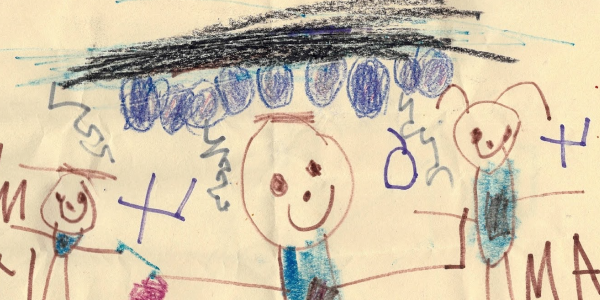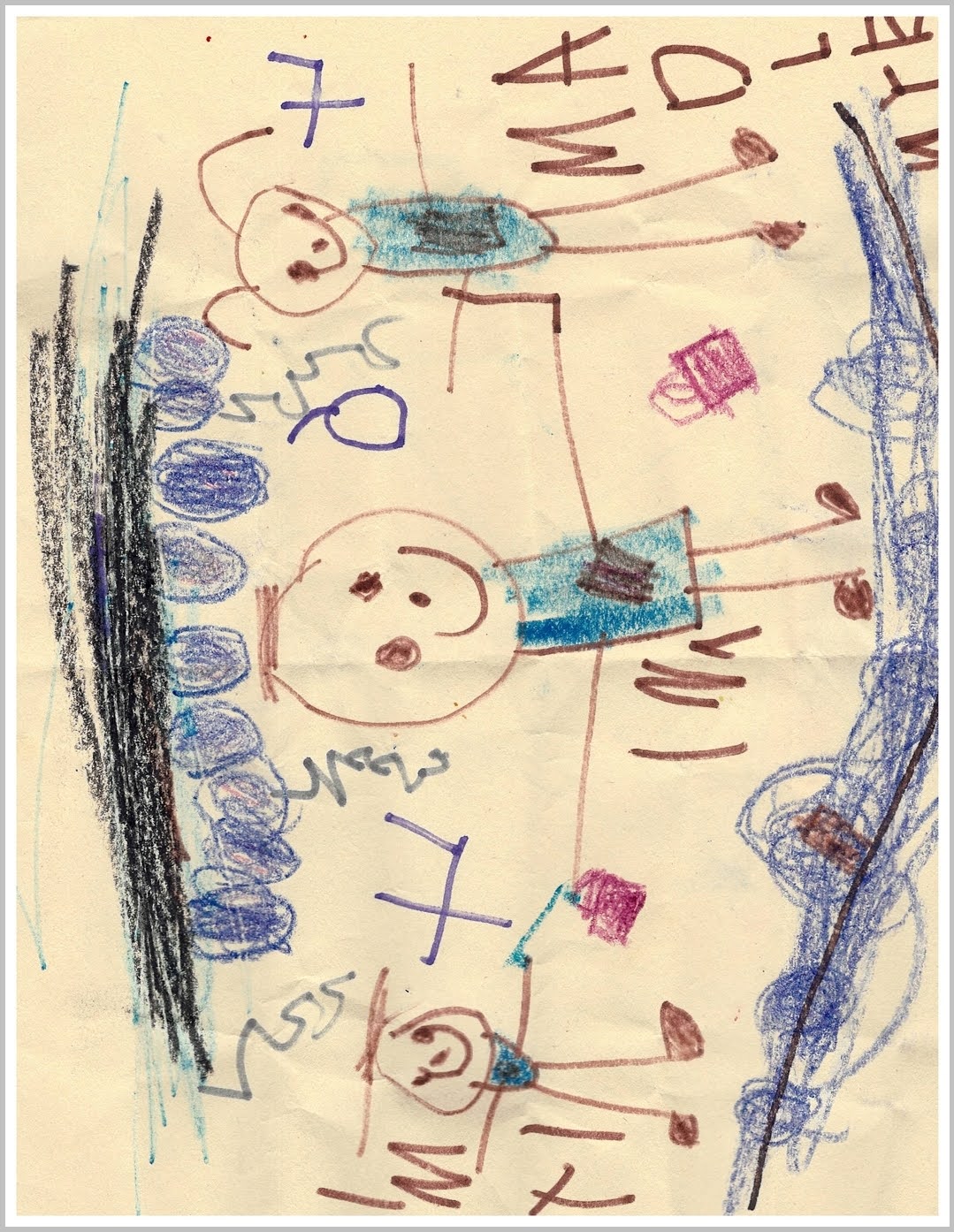Informed and Guided by Context: Strengths-Based Teaching and Learning

You are here
Ms. Bernice was trying something new. She sent the following message to the families of her multilingual preschoolers, and she was not sure what would happen next.
Can you share a video with a story about a family memory of a trip in a car, bus, motorcycle, train, bike, plane, boat, etc. that you can never forget? . . . This could be a fun road trip with cousins to see family or a trip you used to take with family members to go to school or work. . . . Please describe the mode of transportation and why it was memorable. Make a drawing or collage with your child that includes a picture of the transportation.
The responses were immediate and positive. Families had stories to share, and they were excited to share them. Their stories held insights into their everyday lives, and they offered relevance and depth to their children’s learning about a topic. Their stories filled the classroom space—physically, cognitively, socially, and emotionally. Without this link, such meaningful connections would have been left untapped.
Children’s behaviors, learning, outside-of-school experiences, and interactions can too often be framed by what is missing, lacking, or needs to be fixed—a deficit perspective. To reach their potential, children need to be understood, valued, taught, and cared for through a strengths-based approach. While the term has been around for some time, what does it really mean to take a strengths-based approach to teaching and learning?
In this issue of Young Children, authors (including Ms. Bernice) demonstrate different ways early childhood educators can use research-informed strategies, materials, and activities to build from children’s individual as well as social and cultural assets. Threaded across the issue are themes of inclusivity, joy, and belief in children’s capabilities. These are essential ingredients of developmentally appropriate practice, which is why they are emphasized throughout the latest position statement.
Opening the cluster is “Engaging Families of Multilingual Learners: Using Families’ Stories to Link Classroom Content with Children’s Funds of Knowledge,” written by Alexandra Figueras-Daniel and Bernice Vasquez. The authors show how they used audio and video recordings paired with photos to incorporate families’ lived experiences and stories into the class’s study of transportation.
Next, “A Strengths-Based Approach to Inclusive Education for Children of Color with Disabilities,” by Sunmin Lee and Monica Alonzo, outlines four practices to recognize the assets of children with disabilities, especially children of color with disabilities. The authors offer examples of these practices in action, grounded in their work in inclusive Head Start classrooms.
Similarly, “STEM for All: Promoting Inclusive STEM in Early Childhood” details how early childhood educators can plan and implement joyful, accessible STEM experiences. Douglas H. Clements, Elica B. Sharifnia, Chih-Ing Lim, Julie Sarama, Megan Vinh, and Natalie Schock highlight how educators can notice and adjust the learning environment, materials, and instruction to build on children’s interests, capabilities, and what they already know and do.
Indeed, an asset-based approach can begin with what is already present and happening in children’s lives, which is demonstrated in “Using Environmental Print to Support Content Learning: Learning from Cereal Boxes.” Shelley Hong Xu, Stacy Bauer, Sandra Mora Garcia, Claudine Maloles, and Kelly Gacos found that using a form of environmental print—cereal boxes—provided ample opportunities to address learning goals and connect with children’s contexts in their classrooms.
Drawing from the cultural knowledge and assets of a local community, Jenny Kate Karr, Alicia Stapp, Kenya Wolff, and Laurel Lambert write about an initiative focused on access to healthy foods. “Meal Kits as a Strengths-Based Practice in the Mississippi Delta” describes an ongoing project in which families, early learning programs, community partners, and a research team collaborated to design and implement a meal kit program, which contained ingredients and materials to support family and community engagement in nutrition.
Closing the cluster is “Teaching for Equity and Agency: Intentional Strategies That Support Anti-Bias Education.” In this article, Lisa Kuh, Debbie LeeKeenan, and Nadia Jaboneta outline a curriculum approach that aligns with anti-bias education goals—the goals and ideas that help advance equity and justice in early childhood education. Then, they follow one class’s exploration of families, demonstrating the thinking and teaching practices used to enact equitable teaching and learning for all children.
I hope the information and examples in this issue help you to lead with joy, inclusivity, and assets as you use a strengths-based approach in your setting.
—Annie Moses
As you read the articles in this issue, consider:
- How can I engage families in upcoming themes or units of study?
- How can I adapt my environment and materials to nurture STEM explorations for all of the children in my setting?
- What artifacts from children’s homes can I use to increase their engagement with environmental print?
- This issue also includes an article about academic conversations in kindergarten. Do the books in my classroom reflect children’s lived experiences and interests? How might I partner with families to expand my collection?

A 3-year-old created a picture of himself with his 4-year-old brother. For the first time, he included a new friend from preschool. He drew all of them playing in the rain together.
Is your classroom full of children’s artwork? To feature it in Young Children, see the link at the bottom of the page or email [email protected] for details.
We’d love to hear from you!
Send your thoughts on this issue, and on topics you’d like to read about in future issues of Young Children, to [email protected].
Would you like to see your children’s artwork featured in these pages? For guidance on submitting print-quality photos (as well as details on permissions and licensing), see NAEYC.org/resources/pubs/authors-photographers/photos.
Copyright © 2024 by the National Association for the Education of Young Children. See Permissions and Reprints online at NAEYC.org/resources/permissions.
Annie Moses, PhD, is director of periodicals at NAEYC and serves as editor in chief of Young Children and Teaching Young Children.
